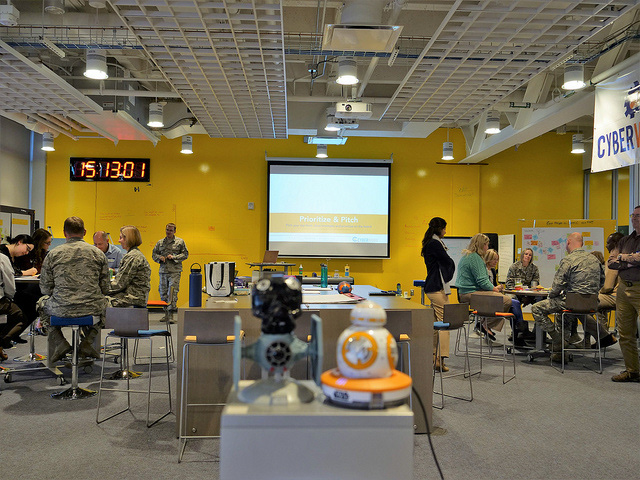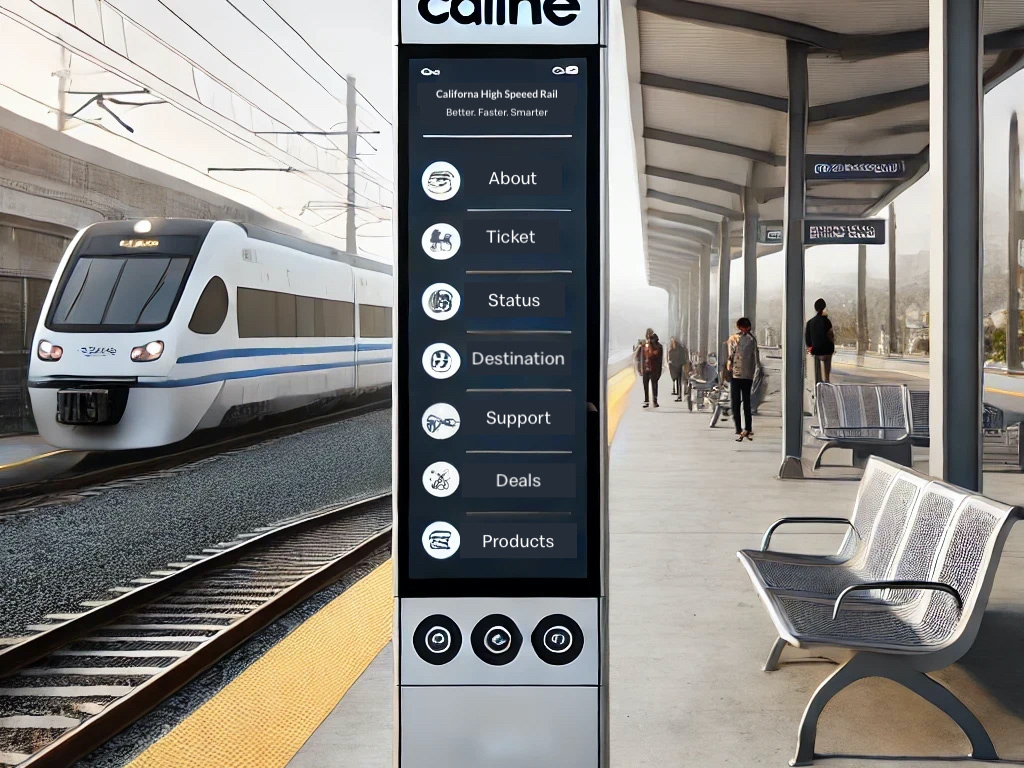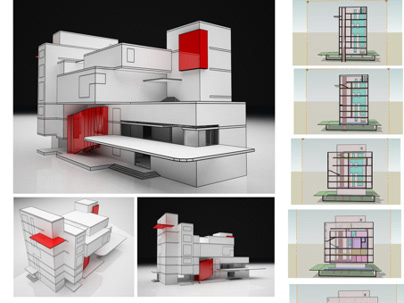
WORKSHOP OBJECTIVE & ACTIVITIES
The workshop represented an effort to address internal processes. Sonia Ghazali – UX/UI designer, and Cole Stamm – UX Researcher, organized and facilitated the workshop, and 14 people, including the Director, attended the workshop. The purpose of this workshop was to bring the AF CyberWorx team together to answer the following question: How might we improve the internal process(es) to ensure that our service offerings are effective, meaningful, and impactful for the warfighters?
The goal was to examine the effectiveness of current processes, create goals, strategies, and action plans for improvement, and build a new vision together.
Activity 1: MAPPING THE CURRENT PROCESS
The purpose of using this activity was to get insight into Company processes, help teams identify bottlenecks, and brainstorm ideas for process improvement.
Through the process mapping activity, the teams were able to articulate the process of their service in a visual form where they would then have the ability to step back and see the big picture. By achieving a bird’s eye view, the team could then more easily categorize areas of the process as possible strengths, weaknesses, opportunities, and threats.
Activity 2: SWOT ANALYSIS ACTIVITY
The teams were given approximately 30 minutes to analyze their process maps and identify the steps in the process that represented areas of strength, weakness, opportunity, and threat. For each aspect of the SWOT analysis, several prompts were provided, including the questions listed below.
For strengths:
What do we do best?
What unique knowledge, talent, or resources do we have?
What advantages do we have?
What is our greatest achievement?
For weaknesses:
What could we improve in our process?
What knowledge, talent, skills, and/or resources are we lacking?
What disadvantages do we have?
In what areas do we need more focus?
For opportunities:
What are the opportunities in our current process?
What are the trends to take advantage of?
How can we turn strengths into opportunities?
How can we turn our weaknesses into opportunities?
For threats:
What obstacles do we face?
Which weaknesses prevent our process from meeting our goals?
What might cause us problems in the future? How?
Are there changes in our field or in technology that could threaten our success?
Activity 3: IDEATION ACTIVITY
Using the process map and SWOT analysis, participants were asked to ideate strategies and ideas to improve Company's internal processes. The participants were asked to focus on solving weaknesses and threats using strengths and opportunities discovered in the previous activity. Each team was given several Ideation Activity Worksheets to help them articulate their ideas.
The teams were asked to collaborate on the ideas/strategies with their partner team and to build on their partner team’s ideas by incorporating their ideas or offering constructive criticism to improve them.
Activity 4: PRIORITIZATION
For this activity, the participants were asked to collaborate once more and pick their top ideas from the ideation phase. A simple impact vs do-ability matrix was used to provide visibility and communicate priorities across the room. The prioritization activity encouraged participants to view their ideas in a real-world application, which led teams to the last activity, where they would develop their best idea into an action plan.
Activity 5: THE ACTION PLAN
The teams were asked to pick their best idea and create an action plan for it by using an Action Plan Worksheet (provided by the facilitators. The purpose of this activity was to get the teams involved and invested in improving CyberWorx's internal processes by coming up with real-world solutions to current problems, as well as to identify necessary steps and timeframe for their strategy to succeed.
WORKSHOP IMPACT & LEARNING
The Internal Process Improvement Workshop successfully achieved its objectives, fostering collaboration, strategic thinking, and actionable outcomes. By engaging participants in structured activities, the workshop provided a clear framework for identifying inefficiencies, generating solutions, and prioritizing improvements.
Key Outcomes
✔ Company SWOT Analysis – Identified key strengths, weaknesses, opportunities, and threats to inform strategic decisions.
✔ Prioritized Improvement Strategies – Teams collaboratively selected the most impactful and feasible process enhancements.
✔ Actionable Implementation Plans – Developed step-by-step action plans to ensure real-world application of the workshop’s insights.
✔ Prioritized Improvement Strategies – Teams collaboratively selected the most impactful and feasible process enhancements.
✔ Actionable Implementation Plans – Developed step-by-step action plans to ensure real-world application of the workshop’s insights.
Key Learnings
✅ Empowering Internal Teams: Involving employees in process improvement leads to stronger buy-in, innovative solutions, and a culture of ownership.
✅ Strategic Decision-Making: Using structured frameworks like process mapping, SWOT analysis, and impact vs. do-ability matrices helps teams align efforts with organizational goals.
✅ Collaboration Drives Innovation: Cross-team discussions and iterative ideation enhanced solution quality by building on diverse perspectives.
✅ Actionable Insights Matter: A well-facilitated workshop goes beyond brainstorming — it results in tangible strategies that drive real change.
✅ Strategic Decision-Making: Using structured frameworks like process mapping, SWOT analysis, and impact vs. do-ability matrices helps teams align efforts with organizational goals.
✅ Collaboration Drives Innovation: Cross-team discussions and iterative ideation enhanced solution quality by building on diverse perspectives.
✅ Actionable Insights Matter: A well-facilitated workshop goes beyond brainstorming — it results in tangible strategies that drive real change.
This workshop not only generated concrete solutions but also strengthened team cohesion, encouraged proactive problem-solving, and set the foundation for continuous internal improvement.





